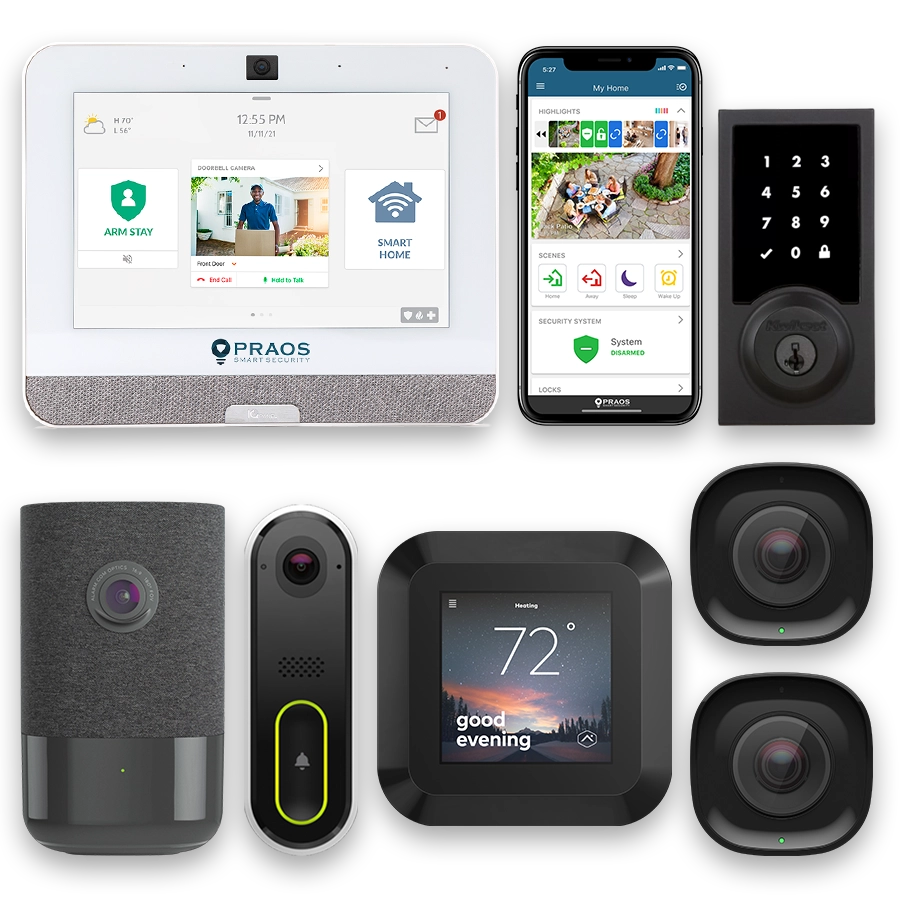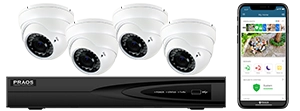- Introduction to Home Security Technology
- The Evolution of Motion Sensors: Past to Present
- Smart Locks: The Next Generation of Home Security
- Integrating Motion Sensors and Smart Locks: A Holistic Approach
- Real-World Applications in Richmond: Success Stories
- The Economics of Smart Home Security
- Future Trends in Home Security Technologies
- Conclusion: Preparing Your Richmond Home for a Secure Future
Introduction to Home Security Technology
Home security technology has significantly evolved over the past few decades, driven by advances in both hardware and software. Modern home security systems have become more sophisticated, reliable, and user-friendly, offering homeowners numerous ways to protect their property and loved ones.
Motion sensors and smart locks are at the forefront of this revolution, providing unprecedented levels of security and convenience. These technologies work by detecting unauthorized access or motion within a defined area and enabling remote control over entry points such as doors and windows.
Initially, home security systems consisted of basic alarm systems that relied on audible warnings to deter intruders. However, these systems had limitations, such as frequent false alarms and lack of remote monitoring capabilities. The integration of motion sensors and smart locks into home security systems has addressed many of these issues, offering a more comprehensive and responsive approach to home protection.
The advantages of motion sensors include their ability to detect movement within a specific range, alerting homeowners to potential intrusions in real-time. These devices often use technologies such as passive infrared (PIR) sensors, ultrasonic sensors, and microwave sensors to accurately sense motion, significantly reducing the occurrence of false alarms.
Smart locks offer a seamless blend of security and convenience. They allow homeowners to control access to their properties via smartphones, key fobs, or even biometric data like fingerprints. This means that keys, which can be lost or duplicated, are no longer the sole method of entry. The ability to monitor and control locks remotely also means that homeowners can permit or restrict access as needed, providing added peace of mind.
The advancements in these technologies are particularly valuable in urban areas like Richmond, where the integration of motion sensors and smart locks can significantly enhance the safety and security of homes. By understanding the capabilities and benefits of these technologies, homeowners can make informed decisions about protecting their properties both now and in the future.
The Evolution of Motion Sensors: Past to Present
Motion sensors have undergone significant advancements since their inception. Initially, motion sensors were primarily used in military applications during World War II. These early sensors were based on radar technology, which could detect objects by bouncing radio waves off them.
By the 1970s, motion sensor technology had made its way into the commercial sector. The introduction of passive infrared (PIR) sensors marked a crucial milestone. PIR sensors detect infrared radiation emitted by warm objects, such as humans and animals. When a person moves within the sensor’s field of view, the sensor detects the change in infrared radiation and triggers an alarm or light.
Since then, the technology has continued to evolve. Modern motion sensors come equipped with various enhancements to improve accuracy and functionality. For instance, some of the latest motion sensors use dual technology, combining PIR with microwave or ultrasonic sensors. Dual technology helps to minimize false alarms, as both sensors must be triggered simultaneously for the alarm to activate.
Furthermore, today’s motion sensors often feature adjustable sensitivity settings, allowing users to customize their detection range and sensitivity to reduce false alarms further. Advances in battery technology have also extended the life of wireless motion sensors, making them more convenient and reducing maintenance needs.
The latest innovations in motion sensing technology include integration with the Internet of Things (IoT). Motion sensors can now be connected to smart home systems, allowing for real-time alerts sent directly to smartphones or other devices. This connectivity also enables advanced functionalities, such as integrating motion detection with smart lighting, security cameras, and alarm systems.
Artificial intelligence (AI) is another emerging trend in motion sensor technology. AI-enhanced sensors can analyze patterns of movement and differentiate between regular household activity and potential threats, providing a higher level of security.
As motion sensors continue to advance, they become more efficient, reliable, and adaptable. These innovations provide homeowners in Richmond and beyond with improved tools to enhance their home security systems.
Smart Locks: The Next Generation of Home Security
Smart locks represent a significant advancement in home security technology, offering features that enhance both convenience and safety. Unlike traditional mechanical locks, smart locks utilize digital mechanisms to allow remote access control and monitoring. This chapter examines the various types of smart locks available, their features, benefits, and the role they play in bolstering home security.
Types of Smart Locks
Smart locks come in various forms, each catering to different needs and preferences. The most common types include:
- Bluetooth Smart Locks: These locks use Bluetooth technology to connect with a smartphone or other mobile device, enabling users to unlock their doors without a physical key.
- Wi-Fi Smart Locks: These locks connect to a home’s Wi-Fi network, allowing for remote access and integration with other smart home devices.
- Z-Wave and Zigbee Smart Locks: Designed for smart home ecosystems, these locks communicate through Z-Wave or Zigbee protocols, facilitating seamless integration with hubs and other smart devices.
- Biometric Smart Locks: These use fingerprint scanning or facial recognition to provide a high level of security through biometric access.
Features and Benefits
Smart locks offer a range of features that contribute to increased security and ease of use. Key benefits include:
- Remote Access: Homeowners can lock or unlock their doors from anywhere using a smartphone app, providing greater flexibility and control.
- Activity Monitoring: Many smart locks offer real-time notifications and logs of who enters and exits the home, enhancing security by tracking activity.
- Temporary Access: Users can grant temporary access to guests, service providers, or family members without needing to hand out physical keys.
- Integration with Other Systems: Smart locks can be integrated with other smart home devices, such as security cameras and alarm systems, to create a comprehensive security network.
Installation and Maintenance
Installing a smart lock typically requires replacing the existing lock mechanism, though many models are designed for DIY installation with minimal tools and expertise. It’s crucial to follow manufacturer guidelines to ensure proper setup and functionality.
Maintenance involves regular software updates to protect against security vulnerabilities and occasional battery replacements to ensure reliable operation. Many smart locks provide low-battery alerts to prevent lockout situations.
Security Considerations
While smart locks offer numerous advantages, it’s important to consider potential security risks. Ensuring robust security involves:
- Choosing reputable brands with strong encryption standards to protect against hacking.
- Regularly updating firmware to address any identified vulnerabilities.
- Using complex passwords for associated apps and accounts.
Smart locks are revolutionizing home security by combining modern technology with practical features that enhance control and peace of mind for homeowners. Their growing popularity underscores the demand for innovative solutions in securing homes more effectively.
Integrating Motion Sensors and Smart Locks: A Holistic Approach
Integrating motion sensors and smart locks can provide a comprehensive home security solution that enhances safety while offering convenience. Combining these technologies allows homeowners to create a more responsive and adaptable security system.
A fully integrated system leverages the strengths of both devices. Motion sensors detect movement within and around the home, providing real-time alerts to potential security breaches. When paired with smart locks, these sensors can trigger automatic locking mechanisms, ensuring doors and windows are secured promptly.
Benefits of Integration
Several benefits arise from integrating motion sensors with smart locks:
- Enhanced Security: The combination of instant movement detection and automatic lock engagement creates a robust line of defense against unauthorized entry.
- Remote Monitoring: Homeowners can manage and monitor their system remotely via smartphone apps, receiving alerts and taking action regardless of their location.
- Automated Responses: Automated responses to detected motion, such as locking doors or even activating security cameras, create added layers of protection.
- Energy Efficiency: Integrated systems can potentially reduce energy consumption by optimizing when and how devices like lights are activated.
System Configuration
Configuring an integrated home security system involves several key steps:
- Device Compatibility: Ensure that motion sensors and smart locks are compatible with each other and with your home automation system.
- Central Hub: A smart home hub can manage communication between devices, creating a seamless operation experience.
- Strategic Placement: Position motion sensors in key locations to cover entry points and common areas. Place smart locks on all accessible doors and windows.
Implementation
Implementing an integrated motion sensor and smart lock system requires careful planning and professional installation to maximize effectiveness:
- Professional Assessment: Experts can evaluate your home’s security needs, recommend suitable devices, and ensure proper installation.
- System Testing: Regular testing ensures that all components are working correctly, and any issues are promptly addressed.
- Maintenance: Routine maintenance of both motion sensors and smart locks will prolong their life and ensure reliability.
This holistic approach to home security, combining motion sensors and smart locks, not only deters potential intruders but also gives homeowners peace of mind, knowing their home can automatically respond in their absence.
Real-World Applications in Richmond: Success Stories
Richmond’s residents have increasingly turned to innovative solutions like motion sensors and smart locks to enhance their home security. With advancements in these technologies, many local homeowners have witnessed significant improvements in safety and convenience.
At the forefront of this revolution is Praos, a leading home security company based in Richmond. Praos’s commitment to safeguarding families and homes transcends conventional security systems. Their extensive local expertise and award-winning service have set them apart as a trusted provider in the community.
One of Praos’s standout offerings includes a monitored new system plan where new customers receive FREE Equipment and Free Installation. This plan allows Richmond homeowners to integrate state-of-the-art security systems without the burden of hefty upfront costs.
Beyond mere installation, Praos is devoted to creating a fully connected home experience. Their systems amalgamate security, automation, and surveillance into one comprehensive app. This integrated approach allows homeowners to monitor and control their home security remotely, providing peace of mind no matter where they are.
Praos ensures that these solutions are accessible and customizable. Their team works closely with clients to tailor a smart home system that aligns with individual needs and budgets. Starting at just $19.95 per month, these affordable rates make advanced home security a viable option for many Richmond households.
By leveraging these modern technologies, Richmond homeowners have witnessed firsthand the profound impact of enhanced security measures. Through Praos’s innovative offerings, many have successfully future-proofed their homes, ensuring a safer and more secure living environment for their families.
The Economics of Smart Home Security
The cost of home security has often been perceived as a significant barrier for many homeowners. However, advancements in smart home technologies like motion sensors and smart locks are not only enhancing security but also offering economic benefits that contribute to the overall value proposition.
Initial Investment: While the initial setup cost for smart home security systems may appear high, it is essential to consider the long-term benefits. The costs of smart locks can range from $100 to $300, and sophisticated motion sensor systems may range between $150 and $500. These prices have been decreasing as technology advances and market competition increases.
Reduction in Insurance Premiums: Many insurance companies offer discounts on home insurance premiums for homeowners who install advanced security systems. According to the Insurance Information Institute, some insurers may provide discounts up to 20% for homes equipped with smart security devices. This reduction can lead to significant savings over time.
Energy Efficiency: Modern smart home security systems can be integrated with other smart home devices to optimize energy use. For example, motion sensors can be connected to lighting systems to ensure that lights are only on when needed, which can lower utility bills. According to the U.S. Department of Energy, using smart lighting can reduce energy usage by up to 50%.
Avoidance of Theft and Vandalism: The presence of visible security measures like smart locks and motion sensors can deter would-be intruders. The FBI’s Uniform Crime Reporting (UCR) Program data indicates that homes with security systems are about 300% less likely to be broken into. Avoiding theft not only prevents the loss of valuable items but also reduces emotional distress and the costs associated with property damage and repair.
Increase in Property Value: Homes equipped with the latest security technologies tend to have higher market values. Real estate experts note that smart home features, including security systems, are increasingly desirable for potential buyers. This increased desirability can translate to higher sale prices and quicker sales cycles.
Maintenance and Upkeep: Routine maintenance costs for smart security systems are relatively low. Software updates for these devices are often automated and provided by manufacturers, ensuring that systems remain secure and up-to-date without additional significant expenses. However, hardware components may require occasional battery replacements or minor servicing, which are usually low-cost and infrequent.
In summary, the economics of smart home security reveal a favorable scenario for homeowners. While there may be an upfront cost, the long-term financial benefits, including lowered insurance premiums, increased energy efficiency, the deterrence of criminal activity, enhanced property value, and minimal maintenance costs, collectively contribute to a robust return on investment. These economic factors make motion sensors and smart locks not just vital for security, but also sound financial decisions for the future-proofing of Richmond homes.
Future Trends in Home Security Technologies
The future of home security technology is rapidly evolving, driven by advancements in connectivity, artificial intelligence, and consumer demand for more comprehensive security solutions. As we look towards the future, several key trends are poised to redefine how homeowners protect their properties.
Artificial Intelligence and Machine Learning
Artificial intelligence (AI) and machine learning (ML) are playing an increasingly crucial role in home security systems. AI-powered cameras and sensors can now identify and differentiate between potential threats and benign activities. For example, these systems can distinguish between a person and a pet, reducing the likelihood of false alarms. Over time, ML algorithms adapt to the specific patterns and behaviors associated with individual households, making security systems more efficient and personalized.
Integration with the Internet of Things (IoT)
The Internet of Things (IoT) connects various devices within a home, creating a network of smart devices that can communicate and coordinate with each other. Future home security systems will leverage IoT to integrate motion sensors, smart locks, cameras, and even household appliances. This interconnected network allows for real-time monitoring and control, providing homeowners with a seamless security experience.
Advanced Biometric Authentication
Though current smart locks utilize basic biometric inputs like fingerprints, future iterations are expected to employ advanced biometric authentication techniques. Facial recognition, iris scanning, and even voice recognition are likely to become standard features in home security systems. These technologies provide an additional layer of security, making unauthorized access increasingly difficult.
Enhanced Remote Monitoring and Control
The capability for remote monitoring and control via smartphones and other devices will continue to improve. Future security systems will offer high-definition video feeds, real-time alerts, and detailed logs of all activities. This ensures that homeowners can monitor their property from anywhere in the world, providing peace of mind and immediate response options in the event of a security breach.
Energy Efficiency and Sustainability
As environmental concerns become more pressing, future home security systems are expected to prioritize energy efficiency and sustainability. Solar-powered security devices and energy-efficient sensors will become more common. These advancements not only reduce the environmental impact but also ensure that security systems remain operational during power outages.
Blockchain Technology
Blockchain technology, known for its use in securing data transactions, is making its way into home security. Blockchain can ensure secure and immutable records of access logs and biometric data. This technology minimizes the risk of data tampering and adds an extra layer of trust and security to smart home systems.
5G Technology
The advent of 5G technology will revolutionize home security by providing faster, more reliable wireless communication. With 5G, smart security devices can transmit data much more quickly, enabling real-time responses and more sophisticated analytics. This will improve the performance and reliability of home security systems.
In conclusion, the future of home security technologies promises more intelligent, connected, and secure living environments. By adopting these emerging trends, homeowners can ensure their properties are well-protected against evolving threats, making their homes safer for years to come.
Conclusion: Preparing Your Richmond Home for a Secure Future
In conclusion, preparing your Richmond home for a secure future involves embracing advancements in home security technology. Motion sensors and smart locks represent the forefront of this evolution, offering robust and intelligent solutions tailored to modern security needs. By integrating these technologies, homeowners can enhance their security measures, ensuring peace of mind and protection for their families.
The journey towards a more secure home begins with understanding the technological shifts that have shaped the industry. Historically, traditional locks and basic alarm systems were the norm. However, the advent of motion sensors and smart locks has revolutionized home security by providing real-time monitoring and automated control. These devices not only function as deterrents but also offer proactive measures to prevent unauthorized access.
By investing in motion sensors, homeowners benefit from advanced features such as sensitivity adjustments, pet immunity, and night vision capabilities. These sensors detect unusual movements and trigger alerts, allowing for immediate action. Furthermore, incorporating smart locks into your home provides enhanced access control. Features such as biometric recognition, remote locking/unlocking, and integration with smart home ecosystems make smart locks a crucial element of modern security strategies.
For Richmond homeowners, the integration of these technologies has shown significant benefits. Residents who have adopted motion sensors and smart locks report increased security and convenience. The ability to monitor and manage home access remotely is particularly useful in a bustling city like Richmond. In light of these advancements, future-proofing your home entails a holistic approach to security, combining both motion detection and smart locking mechanisms.
To ensure long-term security, it is essential for homeowners to stay updated with emerging trends and advancements in home security technology. Regular upgrades and leveraging professional installation services can maximize the effectiveness of these systems. Additionally, securing a robust network infrastructure protects against potential cyber threats, ensuring that smart devices function optimally.
In essence, the future of home security lies in the intelligent integration of advanced technologies. Motion sensors and smart locks offer a glimpse into the possibilities, providing effective solutions to today’s security challenges. By embracing these innovations, Richmond homeowners can create a safer living environment, prepared to meet the demands of tomorrow.
As technology continues to evolve, so will the methods to safeguard our homes. Staying informed and proactive in adopting cutting-edge security measures will remain pivotal in ensuring the safety and tranquility of our living spaces.






